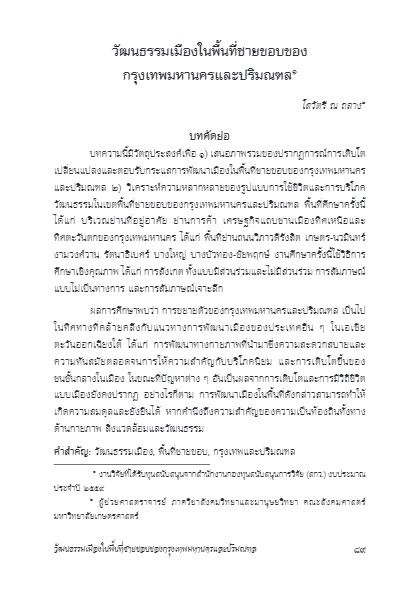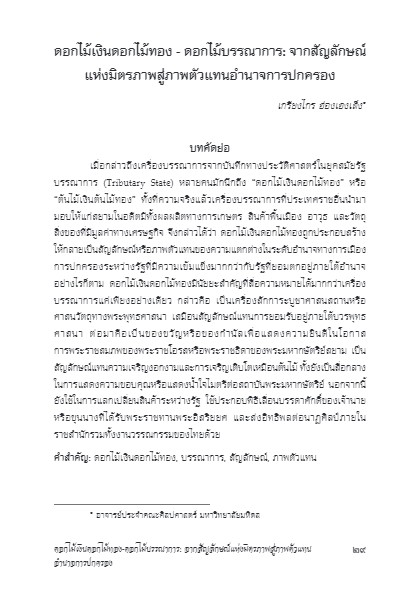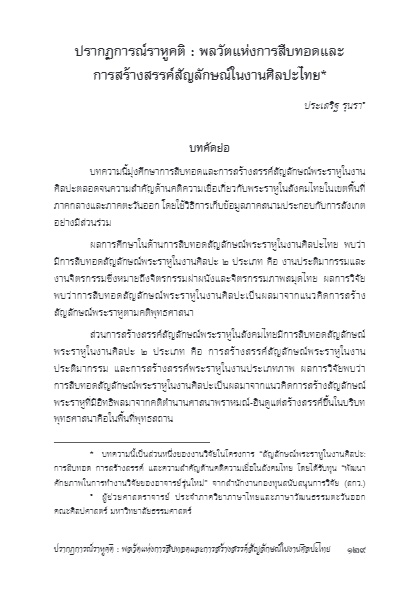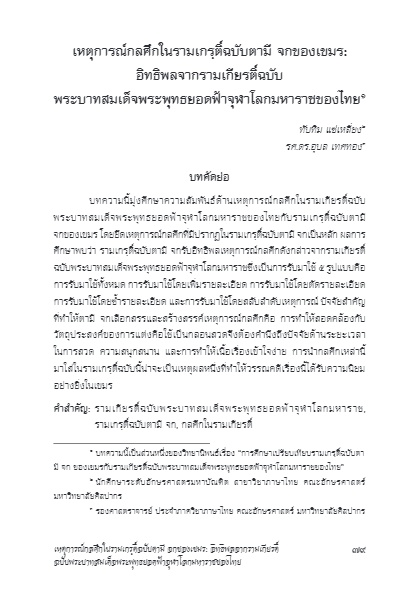ธานีรัตน์ จัตุทะศรี
บทคัดย่อ
บทความนี้มุ่งศึกษาลักษณะการนำเสนอตัวละครหญิงในเรื่องดาหลัง พระราชนิพนธ์รัชกาลที่ 1 และศึกษาคำสอนหญิงจากการนำเสนอตัวละครดังกล่าว ผลการศึกษาพบว่า เรื่องดาหลังนำเสนอตัวละครหญิงให้เป็นภาพสะท้อนของผู้หญิงหลากหลาย “แบบ” ทั้งที่เป็นไปตามอุดมคติและไม่เป็นไปตามอุดมคติ การนำเสนอดังกล่าวมีบทบาทในการสอนผู้หญิงเรื่องการครองตนอย่างชัดเจน โดยแสดงให้เห็นลักษณะของผู้หญิงที่พึงเป็นและผู้หญิงที่ไม่พึงเป็น ซึ่งสอดคล้องกับมโนทัศน์เรื่องผู้หญิงที่ปรากฏในนิทานปันหยีบางสำนวนและวรรณคดีคำสอนหญิงเรื่องต่าง ๆ ของไทย คำสอนที่นำเสนอผ่านตัวละครหญิงดังกล่าว จึงช่วยเสริมคุณค่าและความสำคัญของเรื่องดาหลังในฐานะวรรณคดีคำสอนหญิงเรื่องหนึ่ง
คำสำคัญ : ดาหลัง, ตัวละครหญิง, การนำเสนอ, คำสอนหญิง
(ตีพิมพ์ใน วารสารไทยศึกษา ปีที่ 14 ฉบับที่ 2 (กรกฎาคม – ธันวาคม 2561) หน้า 151-198)
“Once one is born a woman, she should be careful to preserve her purity”: Representation of Female Characters as Lessons for Women in Dalang by King Rama I
Thaneerat Jatuthasri
Abstract
This paper studies the representation of female characters in Dalang by King Rama I and examines the lessons for women, reflecting on their representation. The study finds that the female characters in Dalang represent various types of woman in relation to and opposite to the ideal qualities of women. Such representation explicitly indicates life lessons for women with regard to what a woman should and should not be. Those lessons harmonize with the concept of womankind expressed in some Panji stories and Thai female didactic literature. Lessons for women expressed through the representation of female characters enhance the value and significance of Dalang as a female didactic literary work.
Keywords : Dalang; female characters; representation; lessons for women
(Published in Journal of Thai Studies Volume 14 Number 2 (July – December 2018) Page 151-198)
บทความ / Full Text : Download









